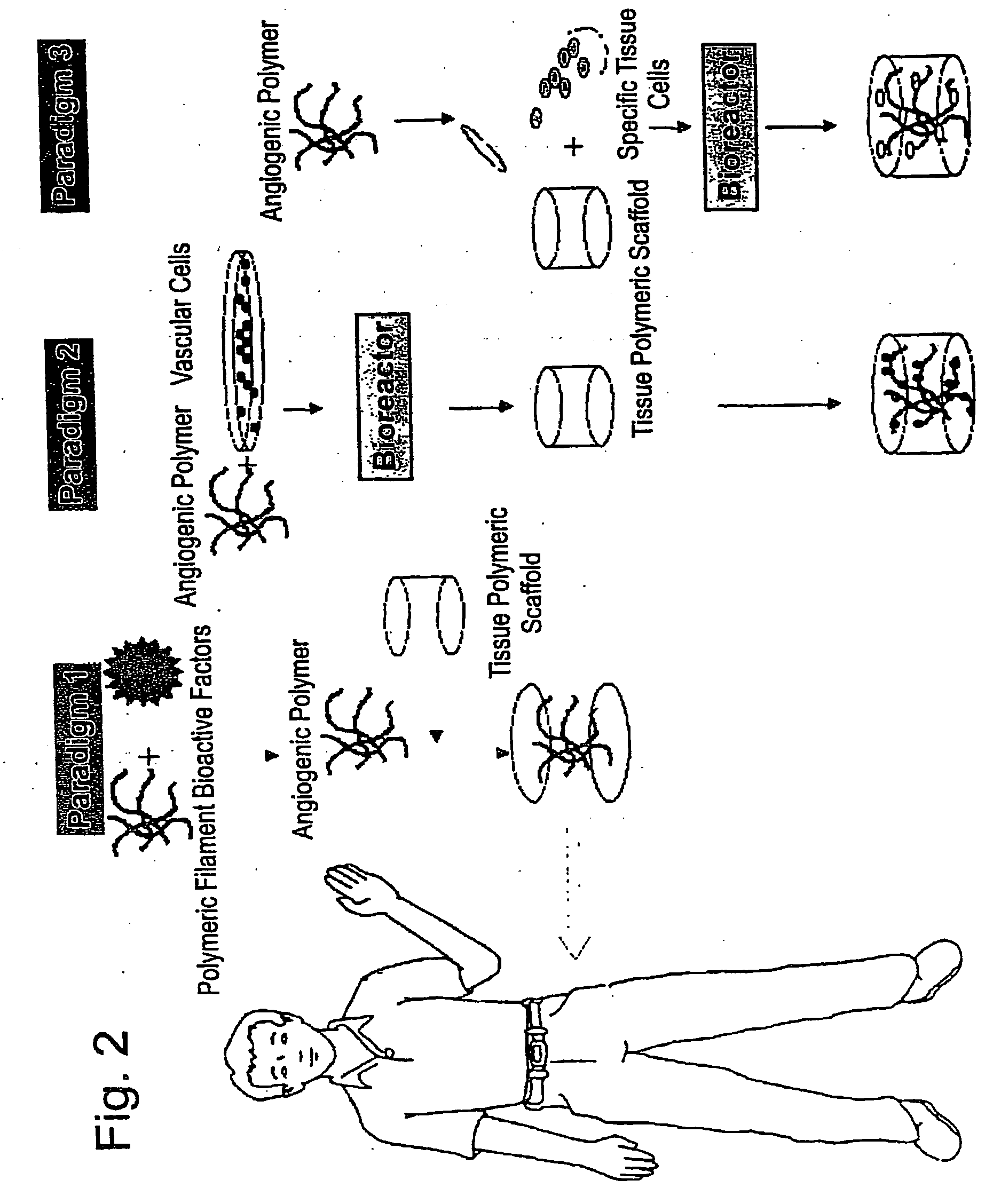Composite scaffolds and methods using same for generating complex tissue grafts
a technology of composite scaffolds and tissue grafts, which is applied in the direction of genetically modified cells, skeletal/connective tissue cells, prostheses, etc., can solve the problems of reducing the supply of donor organs, unable to provide pharmaceutical replacement therapy, and unable to provide full immune protection for patients
- Summary
- Abstract
- Description
- Claims
- Application Information
AI Technical Summary
Benefits of technology
Problems solved by technology
Method used
Image
Examples
example 1
Stereocomplexation of a Dextran-based Polymeric Scaffold With Poly-D and -L Lactic Acid
[0161] Improving the mechanical properties of a polymeric cellular scaffold is a major priority in the field of tissue engineering, particularly in the case of vascular tissue cell scaffolds which must exhibit high burst-strength. Such scaffolds can be mechanically strengthened by cross-linking of the polymeric backbone. In order to achieve this goal, stereocomplexation of a dextran-based polymeric scaffold was effected as follows:
[0162] Materials and Methods:
[0163] Two types of dextran-based block copolymers, one containing segments of enantiomeric D-lactic acid of at least 10 monomer units and the other composed of segments of enantiomeric L-lactic acid of at least 10 monomer units were prepared. These two copolymers were then mixed together to form specific stereocomplex interactions between the complementary D and L enantiomeric blocks along the polymer chains. Stereocomplexation of a polymeri...
example 2
Synthesis of a Lactide-glycolide Polymer-based Filamentous Cellular Scaffold for Growth of Vascular Tissue
[0167] In order to optimally grow both target replacement tissues and supporting vascular tissues within a single integrated cellular scaffold, specialized subcompartments within such an integrated scaffold are required for each tissue type so as to optimize the growth of each and to establish an appropriate structural and functional relationship between the two. This can be achieved structurally via the use of a filamentous scaffold for growth of vascular tissues embedded within a continuous sponge matrix for the growth of the target replacement tissues.
[0168] Therefore, a filamentous cellular scaffold based on poly(lactide-glycolide) polymer capable of supporting optimal growth of vascular tissue when embedded within a continuous sponge matrix cellular scaffold was synthesized. The use of such a polymer further permits the incorporation of agents, such as polypeptides, nucleic...
example 3
Paradigms For Growth of Hybrid Tissues Composed of Target Replacement Tissues and Their Supporting Vasculature Within an Integrated Three-dimensional Cellular Scaffold
[0171] Reconstitution of body tissues with tissues grown in three-dimensional artificial cellular scaffolds represents a highly desirable goal for replacement of diseased, defective or absent tissues or organs and is of particular benefit for avoiding rejection of transplanted donor tissues when such reconstitution is not effected with self-tissues. A major obstacle preventing the achievement of this goal is the requirement for vascularization of three-dimensional, biologically-engineered replacement tissues. In order to achieve this desired aim, an artificial cellular scaffold enabling the combined and regulated growth both of target replacement tissues and of their supporting vascular tissues has been constructed. The architecture of such a scaffold is composed of a first filamentous polymeric component designed for ...
PUM
| Property | Measurement | Unit |
|---|---|---|
| distance | aaaaa | aaaaa |
| diameter | aaaaa | aaaaa |
| diameter | aaaaa | aaaaa |
Abstract
Description
Claims
Application Information
 Login to View More
Login to View More - R&D
- Intellectual Property
- Life Sciences
- Materials
- Tech Scout
- Unparalleled Data Quality
- Higher Quality Content
- 60% Fewer Hallucinations
Browse by: Latest US Patents, China's latest patents, Technical Efficacy Thesaurus, Application Domain, Technology Topic, Popular Technical Reports.
© 2025 PatSnap. All rights reserved.Legal|Privacy policy|Modern Slavery Act Transparency Statement|Sitemap|About US| Contact US: help@patsnap.com



